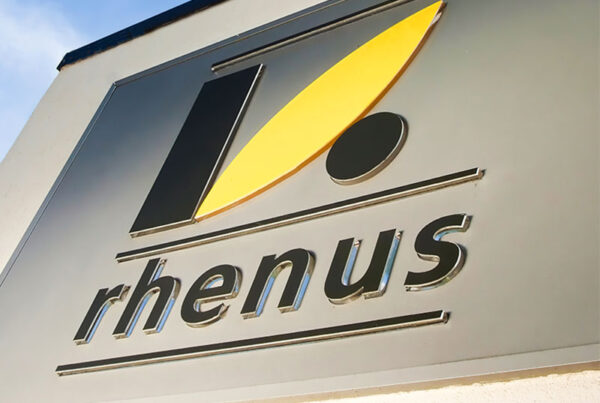Thickeners as a component of lubricating greases
Reading time: 7 Min. | 03.08.2021
Content
General information about lubricating greases
How do you transport water in a sieve? Who doesn’t remember being asked this question by their physics teacher in secondary school? The expected and usual answer is in the form of ice. You change the physical state from liquid to solid and stop the water from passing through the sieve. But what do you do when you can’t change the temperature? How do you stop the water from passing through the sieve? You can’t stop this from happening without using an additional resource. This resource needs to absorb and hold the water, as well as be large and bulky enough not to also pass through the sieve. A sponge springs immediately to mind for such a task.
So what does all this have to do with lubricating greases?
The following general definition applies to every type of lubricating grease:
an expansion of thickening agents in oil.
What is described as an expansion here is, in a figurative sense, a sponge-like structure. In other words, it is a three-dimensional network that is able to store liquids and, under certain conditions, release them again. The common industry term for this is a thickener.
Every lubricating grease consists of at least two, but a maximum of three, components:
- Thickener
- Base oil
- Additives
This takes us back to the initial question and observation. Lubricating grease!? It’s just an oil that cannot flow away! I have heard this comment many times from users at one place or another. In this article, I would like to examine the different types of thickeners to illustrate how lubricating greases can do so much more than just prevent oil from flowing away.
The amount of thickener can range from about 5 to 25 percent, depending on the type of lubricating grease and the desired consistency. The main component in terms of quantity is oil. Previous assumptions that the thickeners in lubricating greases merely act as a supporting structure and are not effective for lubrication have been reconsidered. Both the base oil and the thickening component, which must be compatible with each other, are responsible for the lubricating function of lubricating greases.
Lubricating greases are usually used in place of liquid lubricants if, for technical or economic reasons, their use is more beneficial or liquid lubricants cannot be used. Lubricating greases are often used where there are strict requirements regarding the adherence of the lubricant to the friction point or where lengthy relubrication intervals are required. In most cases, less lubricating grease is consumed than oil. Lubricating greases are also indispensable in cases where lubrication points that are not adequately protected against the penetration of dirt and water need to be sealed. An added advantage is that lubricating greases are better at absorbing intermittent bearing loads, reducing noise and offer a better level of lubricity than oils in the boundary friction area.
Besides the economic factor, there are several technical aspects that have a significant influence on the properties of a lubricating grease simply as a result of the selection of a specific thickener. From a chemical point of view, a variety of different thickeners can be considered. The first distinction is made for lubricating greases with the categories of (metallic) soap thickeners and non-soap thickeners.
(Metallic) soap thickeners
Metallic soaps are produced by means of saponifying fatty components (neutral greases or fatty acids) with the solutions or dispersions of alkali or alkaline earth hydroxides, e.g. lithium hydroxide, sodium hydroxide and calcium hydroxide, as saponifying agents. The term comprises the reaction products of an organic acid and an alkali. Simple or normal soap is produced by using one lye and one fatty acid.
However, if two lyes are used instead of one and are reacted with an acid, a mixed soap is produced.
By contrast, a complex soap is formed when two fatty acids react with only one lye.
What all metallic soaps have in common is that their structure is only temperature-stable up to a certain point. If they are heated past what is known as the dripping point, the thickener melts.
The operating temperatures in the bearings or friction points are an important criterion for grease lubrication. The operating or service temperature is generated from the frictional heat of the bearing itself (bearing temperature) and the heat supply from outside depending on the existing operating conditions (radiant heat). It is reduced when the bearing point releases heat into the environment.
The operating temperature in the steady state is decisive for the selection of the lubricating grease, as the thermal resistance varies greatly from one type of lubricating grease to another.
Lubrication points that come into contact with moisture or water or that are actually washed over with water for the purpose of necessary cooling can only be lubricated with water-resistant lubricating greases. These include calcium, aluminium complex and special lithium soap greases.
Although independent of its performance characteristics, the feedability of a lubricating grease is of great importance. Lubricating greases that cannot be directed to the friction point by existing lubricating grease feeders due to their consistency or structure are often unsuitable.
The most common metallic soap greases are based on a pure metallic soap (e.g. lithium, calcium and sodium). As mentioned above, there are also metallic soap greases with a mixed soap base (e.g. lithium-calcium). These greases marry the advantage of the good water resistance of calcium soaps with the higher operating temperature range of lithium soaps.
The soap-salt complexes resulting from the saponification of complex soap lubricating greases lend these lubricating greases generally favourable usage properties, particularly better thermal stability. Water resistance and shear stability can also be purposefully improved by using complex soaps as thickeners.
Non-soap thickeners
Non-soap lubricating greases contain thickeners that are inorganic or synthetic organic substances. They are used in the production of mineral oil lubricating greases and synthetic greases. Many substances have been used and tested as non-soap thickeners. Besides polyurea, colloidal silicic acid, modified clays and plastic powders such as polytetrafluoroethylene (PTFE) are used.
The main types of lubricating grease with non-soap thickeners that currently have practical importance include:
- Silica gel greases
- Bentonite greases
- Polyurea greases
Gel greases are lubricating greases that are produced with highly dispersed silicic acid as a gelling agent. These silicic acids go by various names, such as Aerosil.
Such silicic acids take the form of amorphous, very fine, whitish powders. However, their thickening effect in mineral oil is not very pronounced. This type of system is also thixotropic (solidifies at rest but becomes more fluid again when moved, shaken or stirred).
Bentonite greases are a group of lubricating greases thickened with modified clays (which are also very fine, amorphous powders). Bentonite is a pure clay and its main component is the highly expansive clay mineral montmorillonite (an aluminium silicate).
In its original state, bentonite is highly hydrophilic and expands with water. This is where the common term expansive clay comes from.
Bentonite greases, which are highly resistant to thermal stress, can only be produced with modified organic derivatives of montmorillonite as thickeners in combination with suitable polar solvents with mechanical processing (shearing).
Bentonite greases have no dripping point as the silicate structures of the thickener are stable well beyond the decomposition temperature of the thickened oils.
Consequently, phase separations with oil leakage do not occur at persistently high temperatures but rather inevitably lead to oil coking. It is therefore very important to comply with the relubrication intervals at high operating temperatures (above 150°C). This is the only way to avoid coking the mineral oil and thus dry running with resulting bearing deterioration.
One disadvantage is that bentonite greases are incompatible with other conventional lubricating greases (mixing by relubrication with another type) and many common lubricating grease additives.
This is why fat fillings often soften when they are mixed. Selecting suitable additives is very problematic for this same reason. In practice, contact between different types of grease must be avoided when changing grease types by cleaning the bearings.
Polyurea greases contain thickeners in the form of polymeric urea derivatives, which are, in chemical terms, derived from urea, and are thus also known as polyurea greases. The thickeners of the polyurea greases are synthetically produced
using methods of organic chemistry. Polyurea greases are also considered ash-free because these purely organic components do not leave any mineral residues behind in the form of ash.
Urea derivatives are produced when diisocyanates are reacted with amines. Given the toxicity of diisocyanates and amines, they must be produced in special closed systems which makes the production process more difficult.
Polyureas form three-dimensional networks in base oils which resemble those seen in soaps but are finer.
There is some uncertainty regarding the combustion of polyurea greases, as toxic decomposition products can pollute the environment.
Polyurea greases are to be regarded as higher quality than lithium complex-saponified, high-temperature greases. The temperature stability of polyurea is greater than that of lithium complex soap (dripping point > 250°C). They are therefore advantageous in terms of thermal load capacity for special applications. They are always a method of choice when conventional lithium-complex greases reach their continuous temperature limit at approx. 150°C. Continuous application temperatures of up to 190°C can be easily managed with synthetic-based polyurea greases.
Other advantages of polyurea greases:
- Excellent wear protection and high-pressure properties
- Strong adhesive effect on metallic friction partners
- Excellent water resistance
- Very good corrosion protection
- Increased efficiency thanks to prolonged lubrication intervals
Dripping point comparison:
| Thickener | Typical dripping point [°C] |
|---|---|
| Lithium | >190 |
| Calcium | >1502 Value 2 |
| Sodium | >170 |
| LiCa | >180 |
| Lithium complex | >250 |
| Aluminium complex | >250 |
| Bentonite | without |
| gel | without |
| PTFE | without |
| polyurea | >250 |
Conclusion
In summary, it can be said that the properties of a lubricating grease are determined by the main components of base oil and thickener. The thickener determines the dripping point, application temperature limit, water resistance and shear stability, among other things.











